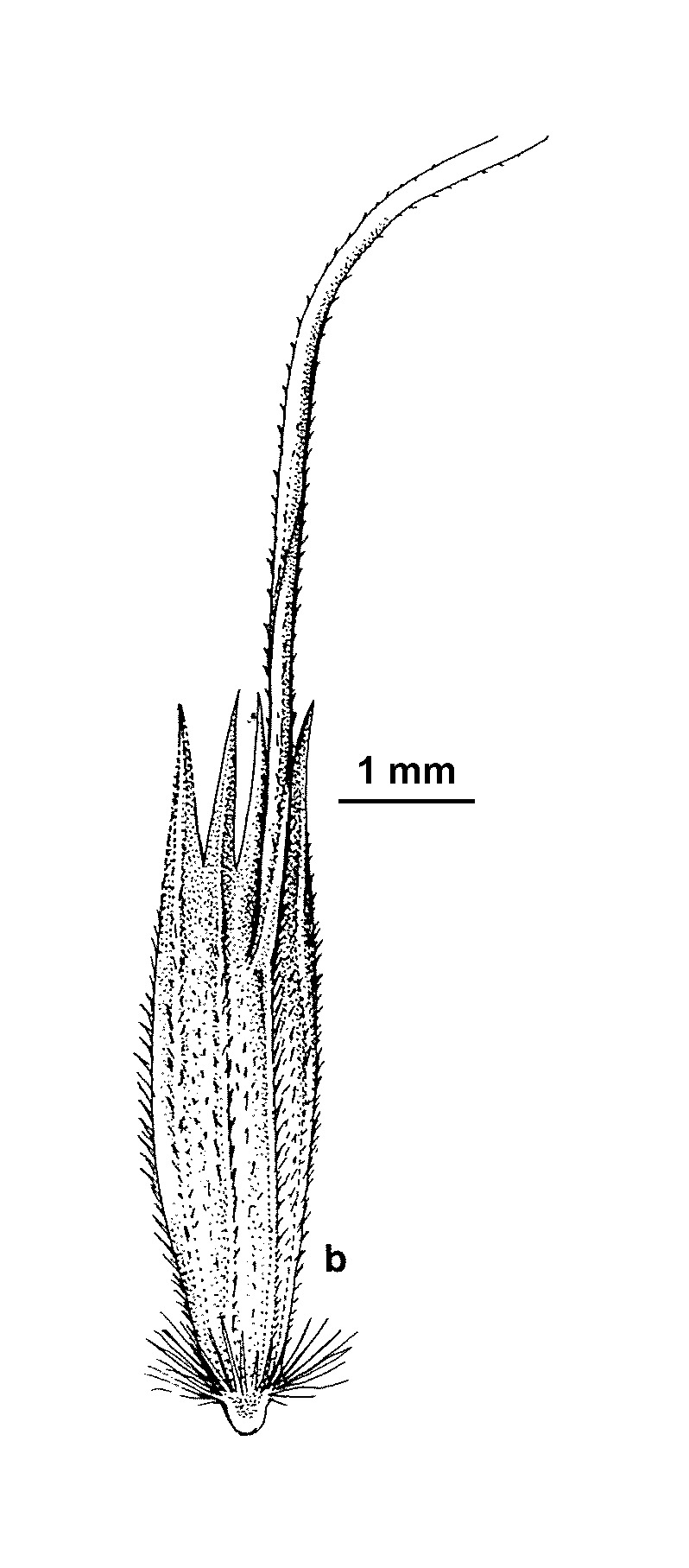Amphibromus recurvatus
Swallen Dark Swamp Wallaby-grassTufted perennial; culms to 1.5 m high. Leaves glabrous, smooth or slightly scabrous; blade flat or loosely inrolled, to 40 cm long, 2–5 mm wide; ligule acute, 6–11 mm long. Inflorescence a slender, rather dense, erect, often purplish panicle, to 20 cm long. Spikelets 4–6-flowered, 7–11 mm long (excluding awns); glumes acute, often purplish, the lower 1–3-nerved, 3.5–5.5 mm long, the upper 3–5-nerved, 4–5.5 mm long; lemma 4–5.2 mm long, densely hispid with short, semi-appressed bristles, apical teeth 4, more or less equal, 0.4–1.2 mm long, dark purplish; awn 9–18 mm long, inserted 35–50% of the lemma length from the apex, column not strongly twisting, 3–5.5 mm long; palea slightly shorter than lemma. Flowers Nov.–Jan.
GleP, VVP, GipP, OtP, WaP, GGr, DunT, EGL, EGU, HSF, Strz. Also SA, Tas. Occurs in swamps across southern Victoria, but commonest in the south-west.
Walsh, N.G. (1994). Poaceae. In: Walsh, N.G.; Entwisle, T.J., Flora of Victoria Vol. 2, Ferns and Allied Plants, Conifers and Monocotyledons, pp. 356–627. Inkata Press, Melbourne.
 Spinning
Spinning

